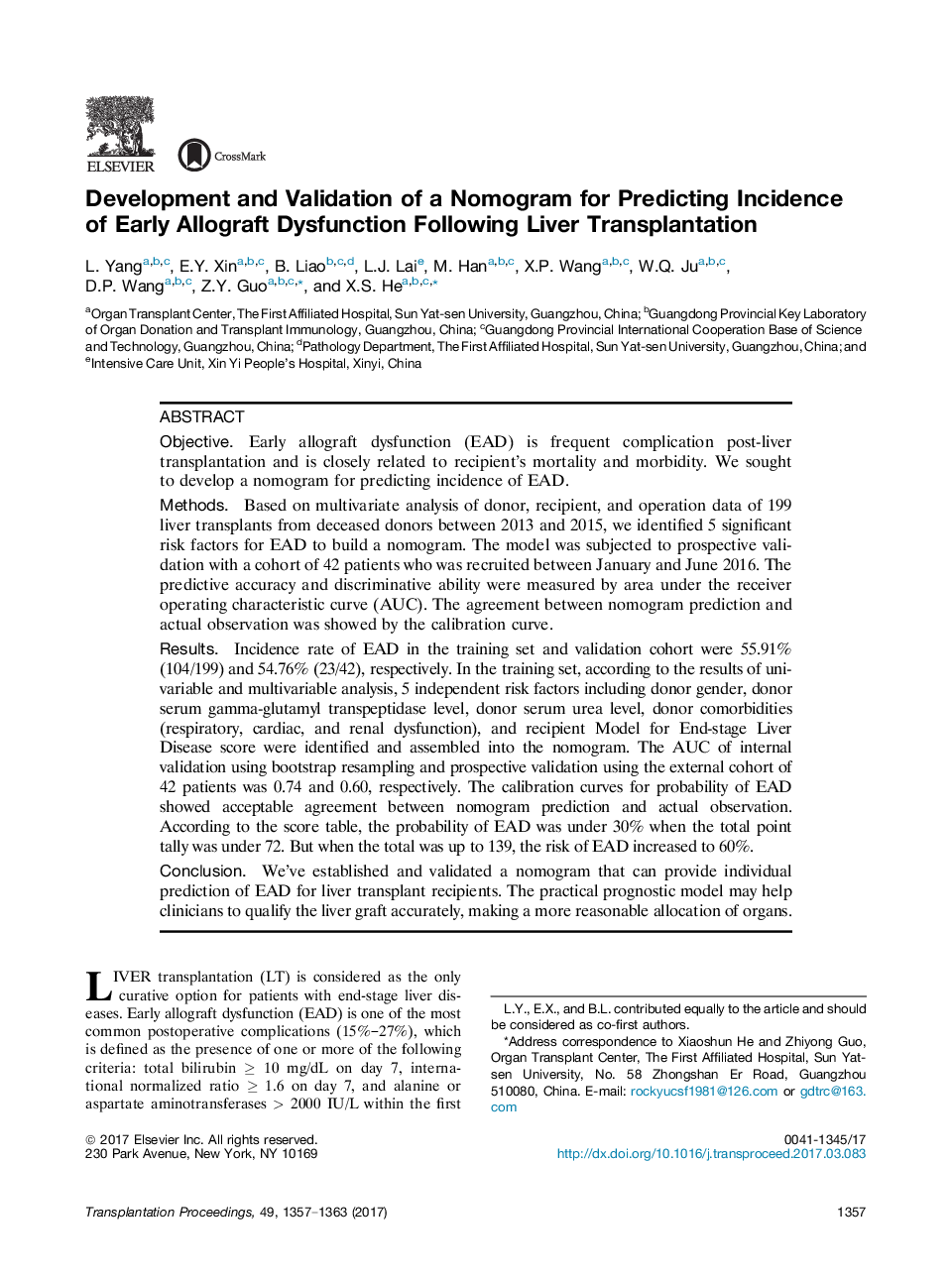| Article ID | Journal | Published Year | Pages | File Type |
|---|---|---|---|---|
| 5728694 | Transplantation Proceedings | 2017 | 7 Pages |
â¢We established and validated a novel nomogram for predicting incidence of EAD following liver transplantation.â¢It is the first nomogram for predicting incidence of EAD following liver transplantation, which can help clinicians to qualify the liver graft accurately and make a more reasonable allocation of organs.â¢The internal validation and prospective validation of the nomogram were both acceptable, which guaranteed the model's popularization.â¢We made a score table for discriminating the risk of EAD, making it more convenient in clinical practice.
ObjectiveEarly allograft dysfunction (EAD) is frequent complication post-liver transplantation and is closely related to recipient's mortality and morbidity. We sought to develop a nomogram for predicting incidence of EAD.MethodsBased on multivariate analysis of donor, recipient, and operation data of 199 liver transplants from deceased donors between 2013 and 2015, we identified 5 significant risk factors for EAD to build a nomogram. The model was subjected to prospective validation with a cohort of 42 patients who was recruited between January and June 2016. The predictive accuracy and discriminative ability were measured by area under the receiver operating characteristic curve (AUC). The agreement between nomogram prediction and actual observation was showed by the calibration curve.ResultsIncidence rate of EAD in the training set and validation cohort were 55.91% (104/199) and 54.76% (23/42), respectively. In the training set, according to the results of univariable and multivariable analysis, 5 independent risk factors including donor gender, donor serum gamma-glutamyl transpeptidase level, donor serum urea level, donor comorbidities (respiratory, cardiac, and renal dysfunction), and recipient Model for End-stage Liver Disease score were identified and assembled into the nomogram. The AUC of internal validation using bootstrap resampling and prospective validation using the external cohort of 42 patients was 0.74 and 0.60, respectively. The calibration curves for probability of EAD showed acceptable agreement between nomogram prediction and actual observation. According to the score table, the probability of EAD was under 30% when the total point tally was under 72. But when the total was up to 139, the risk of EAD increased to 60%.ConclusionWe've established and validated a nomogram that can provide individual prediction of EAD for liver transplant recipients. The practical prognostic model may help clinicians to qualify the liver graft accurately, making a more reasonable allocation of organs.
